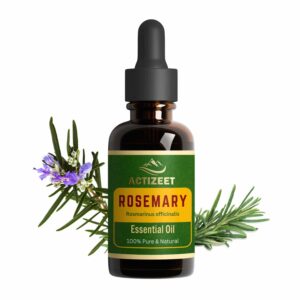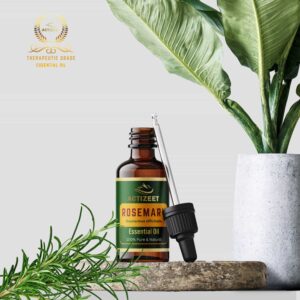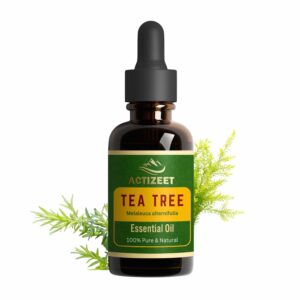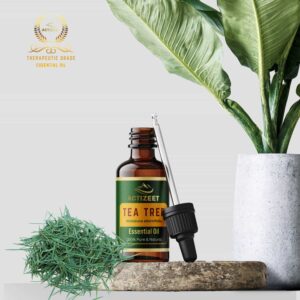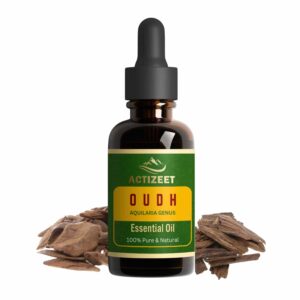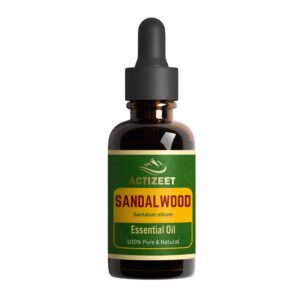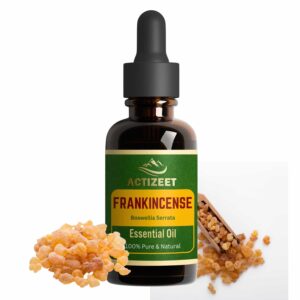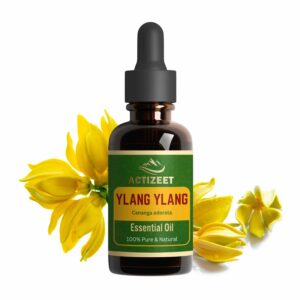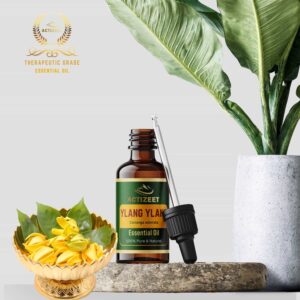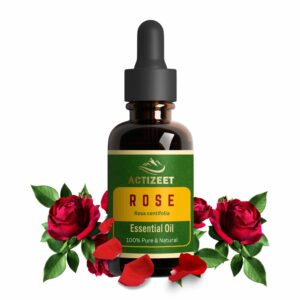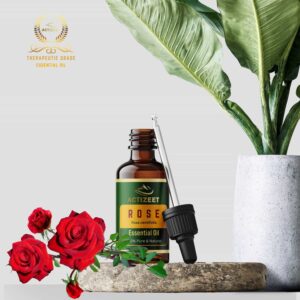Essential oils have gained significant popularity in recent years, but what exactly are they? In simple terms, essential oils are highly concentrated plant extracts that capture the fragrance and therapeutic properties of the plants from which they are derived. These oils are typically obtained through a process called distillation, which involves heating the plant material and then collecting the vapor that is released.
The composition of essential oils is what makes them so unique and powerful. They consist of various chemical compounds such as terpenes, esters, aldehydes, phenols, and many others.
Each compound contributes to the oil’s distinct aroma and potential health benefits. It is this complex combination of compounds that gives essential oils their therapeutic properties.
Table of Contents
ToggleHistorical Background and Origins of Essential Oils
The use of essential oils dates back thousands of years to ancient civilizations such as Egypt, China, Greece, and India. In these cultures, essential oils were highly valued for their medicinal properties as well as their spiritual significance. They were used in various practices like aromatherapy, religious rituals, beauty treatments, and even embalming processes.
The origins of essential oils can be traced back to different parts of plants, including flowers (such as lavender or rose), leaves (like peppermint or eucalyptus), bark (such as cinnamon or cedarwood), roots (like ginger or vetiver), seeds (such as fennel or coriander), and even resinous substances (like frankincense or myrrh). These plant materials were processed using different extraction methods to obtain the concentrated oil.
Understanding the definition and composition of essential oils sets the foundation for exploring their historical background and cultural significance throughout human civilization. As we delve deeper into this fascinating subject matter in subsequent sections, we will unravel more intriguing aspects of these aromatic wonders that have captivated humanity for centuries.
Extraction Methods of Essential Oils
Distillation Process: Steam Distillation and Water Distillation
When it comes to extracting essential oils, one of the most common methods used is the distillation process. There are two primary techniques within this method: steam distillation and water distillation.
Steam distillation involves passing steam through the plant material, causing the essential oil to evaporate. The steam and oil vapour then travels through a condenser, where they cool down and turn back into a liquid state.
Since essential oils have a lower boiling point than water, they can be easily separated from the condensed water. Water distillation, on the other hand, is similar to steam distillation but uses boiling water instead of steam.
In this process, plant material is submerged in boiling water, and as it heats up, the essential oils are released into the steam above the water. The vapours are then collected and cooled to obtain the concentrated essential oil.
Cold Pressing Method for Citrus Fruits
The cold pressing method is primarily used for extracting essential oils from citrus fruits like oranges, lemons, and grapefruits. It involves mechanical pressure being applied to the peel or rind of these fruits to release their aromatic oils. Firstly, the fruit’s outer layer is carefully pierced or grated without damaging the underlying bitter white pith.
Then a device called an “expeller” is used to press out both juice and oil from inside these punctured peels simultaneously. The mixture of juice and oil is passed through separators that remove any remaining solids or impurities before separating out pure citrus essential oil.
The cold pressing method preserves much of citrus fruits’ natural fragrance because it doesn’t involve heat or chemicals that may alter their chemical composition. This technique produces high-quality citrus essential oils renowned for their fresh scent and vibrant properties.
Solvent Extraction Technique
Solvent extraction is another method used to extract essential oils, especially for delicate flowers and plants that don’t yield enough oil through distillation. It involves soaking the plant material in a solvent, which dissolves the essential oil compounds.
One commonly used solvent is hexane, a hydrocarbon-based compound. The plant material is soaked in hexane, allowing it to dissolve the essential oil constituents.
Afterwards, the mixture is filtered to separate the solvent from the dissolved essential oil. The solvent is then removed through evaporation, leaving behind the concentrated essential oil.
While solvent extraction can be efficient in obtaining oils from certain plants, it’s important to note that residual traces of solvents may be present in the final product. Therefore, this method requires additional steps like vacuum distillation or carbon dioxide extraction to remove any remaining traces of solvents and ensure a pure and safe essential oil.
Overall, these extraction methods play a vital role in obtaining high-quality essential oils with their distinct aromas and therapeutic properties. Whether using steam distillation for most plants or utilizing cold pressing or solvent extraction for specific botanicals, each technique contributes to capturing nature’s fragrant offerings in their purest form.
Popular Types of Essential Oils
Lavender Oil: Benefits, Uses, and Varieties
Lavender oil is renowned for its enchanting aroma and numerous therapeutic properties. Derived from the lavender plant, this essential oil has been used for centuries in various cultures for its calming and soothing effects.
The benefits of lavender oil are vast, making it a staple in aromatherapy and natural remedies. One of the key benefits of lavender oil is its ability to promote relaxation and alleviate stress.
Its gentle floral scent helps create a tranquil atmosphere that promotes deep sleep and reduces anxiety. Additionally, lavender oil possesses anti-inflammatory properties that can help soothe skin irritations such as insect bites or minor burns.
When it comes to varieties of lavender oil, two popular types are Bulgarian lavender and French lavender. Bulgarian lavender is known for its rich floral scent and high ester content, which contributes to its relaxing properties.
On the other hand, French lavender has a sweeter scent with more herbaceous undertones. Both varieties offer similar benefits but slightly differ in aroma profiles.
Tea Tree Oil: Properties, Applications, and Safety Precautions
Tea tree oil, also known as melaleuca oil, is a powerful essential oil with diverse properties that make it highly versatile in skincare routines and natural remedies. Derived from the leaves of the tea tree (Melaleuca alternifolia), native to Australia, this potent essential oil has gained popularity due to its antimicrobial and antiseptic qualities.
One of the notable applications of tea tree oil is treating acne-prone skin. Its antibacterial properties help combat acne-causing bacteria while reducing inflammation without causing excessive dryness commonly associated with harsher treatments.
Moreover, tea tree oil can be used as an ingredient in homemade cleaning solutions since it effectively kills germs on surfaces. Although tea tree oil offers numerous benefits, it should be used with caution.
It is essential to dilute tea tree oil before applying it to the skin to prevent irritation, especially for those with sensitive skin. Additionally, if you are pregnant or have any pre-existing medical conditions, consult with a healthcare professional before using tea tree oil.
Peppermint Oil: Therapeutic Uses, Cooling Effect, and Menthol Content
Peppermint oil is renowned for its invigorating aroma and cooling sensation. Derived from the peppermint plant (Mentha piperita), this essential oil contains high levels of menthol, which contributes to its distinct properties and therapeutic uses. One of the primary uses of peppermint oil is to alleviate digestive issues such as bloating and indigestion.
Its carminative properties help relax the muscles in the gastrointestinal tract, relieving discomfort and aiding digestion. Peppermint oil can be taken orally in diluted form or applied topically to the abdomen for targeted relief.
In addition to its digestive benefits, peppermint oil can also provide relief from headaches and sinus congestion. Applying a few drops diluted in a carrier oil on the temples or inhaling its aroma through steam inhalation can help reduce tension headaches and clear nasal passages.
It’s important to note that while peppermint oil provides numerous benefits when used correctly, it should be used sparingly as it can cause skin irritation in some individuals due to its high menthol content. Always perform a patch test before applying it directly to your skin, and consult with a healthcare professional if you have any underlying health conditions or concerns.
Lesser-Known Essential Oils with Unique Properties
Frankincense Oil: Ancient Resin with Spiritual Significance and Health Benefits
Frankincense oil, derived from the resin of Boswellia trees, has a rich history that dates back thousands of years. This precious oil holds immense spiritual significance and is commonly used in various religious and meditative practices. Frankincense has been treasured for its calming and grounding properties, making it ideal for enhancing meditation or yoga sessions.
Its soothing aroma is believed to help deepen spiritual connections and promote a sense of inner peace. Aside from its spiritual associations, frankincense oil offers an array of health benefits as well.
It possesses powerful anti-inflammatory properties that can aid in relieving joint pain and reducing inflammation in the body. This makes it particularly useful for individuals suffering from conditions such as arthritis or muscle discomfort.
Additionally, frankincense oil supports healthy skin by promoting cellular regeneration, and minimizing the appearance of scars and wrinkles. Its antiseptic properties also make it an excellent choice for treating minor cuts or wounds.
Ylang-Ylang Oil: Floral Scent with Calming Effects on the Mind and Body
Ylang-ylang oil is derived from the vibrant yellow flowers of the Cananga odorata tree native to Asia-Pacific regions. With its sweet, exotic floral scent, ylang-ylang essential oil is known for its calming effects on both mind and body.
It is often used in aromatherapy to reduce stress levels, alleviate anxiety symptoms, and induce feelings of relaxation. Due to its natural sedative properties, ylang-ylang can be particularly beneficial for individuals struggling with sleep issues or insomnia.
Diffusing ylang-ylang oil before bedtime can create a serene atmosphere conducive to a restful night’s sleep. Apart from its mental health benefits, ylang-ylang oil also has positive effects on the skin and hair.
It helps balance sebum production, making it suitable for both dry and oily skin types. When applied topically, it can enhance the appearance of hair by promoting healthy growth and adding shine.
Helichrysum Oil: Rare Flower Extract Known for Skin Healing Properties
Helichrysum oil, extracted from the vibrant yellow flowers of the Helichrysum italicum plant, is a rare and valuable essential oil renowned for its remarkable skin-healing properties. Its potent anti-inflammatory and antioxidant properties make it an ideal natural remedy for various skin conditions.
Helichrysum oil’s regenerative effects promote tissue repair, making it effective in reducing the appearance of scars, acne marks, or other blemishes. It also aids in soothing irritated or inflamed skin caused by conditions like eczema or psoriasis.
Additionally, helichrysum oil can be used to alleviate sunburns due to its cooling and anti-inflammatory effects. Furthermore, this exceptional essential oil offers benefits beyond skin care.
Helichrysum is known for its analgesic properties, which can relieve muscle aches and joint pain when applied topically. Its invigorating aroma is believed to uplift moods and provide mental clarity.
Incorporating these lesser-known essential oils into your aromatherapy routine or skincare regimen can unlock a myriad of benefits for your overall well-being. From ancient spiritual resonance to therapeutic applications, frankincense oil, ylang-ylang oil, and helichrysum oil showcase nature’s gifts in their purest forms.
Aromatherapy: Creating a Relaxing Atmosphere at Home or Spa
Unleashing the Power of Essential Oils Through Aromatherapy
When it comes to creating a serene and calming environment, essential oils are the go-to solution. Aromatherapy, the art of utilizing aromatic plant extracts, has gained popularity for its ability to enhance well-being and promote relaxation. Whether it’s in the comfort of your own home or within the tranquil ambience of a spa, essential oils can transform any space into an oasis of serenity.
Diffusers: Ultrasonic vs Nebulizing Diffusers
One of the most popular ways to disperse essential oils is through diffusers.
These remarkable devices release tiny particles of oil into the air, allowing their delightful fragrances and therapeutic properties to permeate throughout your surroundings. Ultrasonic diffusers work by breaking down water and essential oil molecules into a fine mist through ultrasonic vibrations.
This gentle diffusion method helps maintain the integrity of the oils while adding moisture to the air, making it an excellent choice for those seeking both aroma and humidity. On the other hand, nebulizing diffusers operate without water or heat.
Instead, they use pressurized air to atomize pure essential oil molecules into microparticles that swiftly fill any space with fragrance. Since nebulizers don’t dilute essential oils in water, they provide a more concentrated aroma experience.
However, keep in mind that nebulizers may not be suitable for all environments due to their stronger scent intensity.
Blending Techniques for Customized Scents
One of the beauties of using essential oils is their versatility in creating customized scents tailored to individual preferences or specific therapeutic needs. To unleash your inner perfumer, experiment with various blending techniques that allow you to combine different oils harmoniously.
Top, middle, and base notes are the three categories used to categorize essential oils based on their volatility or evaporation rate. Begin by selecting a top-note oil like zesty citrus or invigorating eucalyptus for an initial burst of fragrance.
Then, choose a middle-note oil such as soothing lavender or refreshing rosemary to provide balance and harmony to your blend. Add a grounding base note like earthy patchouli or warm cedarwood to anchor the scent and give it staying power.
Remember that blending essential oils is both an art and a science; each drop plays a role in creating the perfect olfactory symphony. Start with small amounts, adjusting the ratio until you achieve your desired scent profile.
Don’t be afraid to explore different combinations—a world of aromatic wonders awaits!
Inhalation Methods for Respiratory Health Improvement
Inhaling essential oils is an effective way to support respiratory health while enjoying their delightful aromas simultaneously. Steam inhalation is a classic method that involves adding a few drops of essential oil to hot water, then covering your head with a towel while leaning over the bowl and inhaling deeply.
This technique can help alleviate nasal congestion, clear sinuses, and provide relief from respiratory discomfort. Another popular inhalation method is using inhalers or personal diffusers specifically designed for essential oils.
These portable devices allow you to enjoy aromatherapy benefits on the go by simply inhaling from them directly. They are perfect companions during travel or anytime you need a quick pick-me-up.
It’s important to note that not all essential oils are suitable for inhalation, especially those high in phenols or strong irritants like cinnamon or oregano. Always research any potential risks associated with specific oils before using them for inhalation purposes.
By incorporating these practical uses of essential oils into your everyday life through aromatherapy techniques like diffusers, blending custom scents, and inhalation methods, you can bring the transformative power of nature’s essence to your living space or spa-like retreat. Embrace the aromatic journey and let the soothing embrace of essential oils wash over you, providing relaxation, balance, and a renewed sense of well-being.
Safety Guidelines When Using Essential Oils
Cautionary Measures for Topical Application (Dilution Ratios)
When it comes to applying essential oils directly on your skin, it’s crucial to follow proper dilution ratios to ensure safety and prevent any adverse reactions. Essential oils are highly concentrated and potent substances that should not be used undiluted. To dilute an essential oil, you need a carrier oil such as coconut oil, sweet almond oil, or jojoba oil.
For regular use on adults, a safe dilution ratio is generally 2-3% essential oil to carrier oil. This means adding around 12–18 drops of essential oil per ounce of carrier oil.
However, for certain oils with higher potency or sensitivity concerns, like cinnamon or peppermint, even lower dilutions may be necessary. Remember to patch-test each diluted blend before applying it liberally onto your skin.
Apply a small amount of the diluted mixture to the inside of your forearm and wait for 24 hours to check for any adverse reactions such as redness, itching, or irritation. If you experience any discomfort during this time period, discontinue use immediately.
Sensitivity Testing Before Use (Patch Test)
Before incorporating a new essential oil into your routine, conducting a patch test is an important step in ensuring that it suits your individual needs and doesn’t cause any unwanted reactions. To perform this simple test:
- Choose an inconspicuous area of skin on your inner forearm or behind the ear. 2. Dilute the essential oil according to the recommended guidelines mentioned earlier.
- Apply a small amount of the diluted essential oil blend to the designated area and let it absorb into your skin. 4. Cover the area with a sterile bandage or adhesive tape.
- Leave the patch in place for approximately 24 hours without getting it wet. 6. After the allotted time, remove the bandage and observe the area for any signs of redness, swelling, itching, or irritation.
If no adverse reactions occur during this period, it is usually safe to use the essential oil in question. However, it’s always wise to exercise caution and monitor your skin’s response when using new oils or experimenting with different blends.
Pregnancy and Child Safety Considerations
During pregnancy, certain essential oils may pose potential risks to both the mother and the unborn child. It is advisable to consult with a qualified healthcare professional before using any essential oils during this critical period.
Generally speaking, some oils should be avoided altogether during pregnancy, such as clary sage, basil, rosemary, and thyme. Moreover, when considering essential oil usage with infants or young children (under two years old), extra precautions must be taken due to their delicate systems.
Many oils may not be suitable for young children due to their high potency or potential allergenic properties. Always do thorough research or consult a paediatrician before using essential oils on babies or toddlers.
Essential oil safety is of utmost importance to ensure a positive experience and avoid any adverse effects. By following dilution guidelines for topical application, conducting patch tests before use, and being aware of specific considerations during pregnancy or when using them on children; you can enjoy the benefits of these aromatic treasures while keeping yourself and your loved ones safe from harm.
Essential Oil Storage Tips
Proper storage of essential oils is crucial to maintaining their potency and extending their shelf life. Here are some essential oil storage tips to ensure that your precious oils stay fresh and effective:
Avoid Exposure to Direct Sunlight
Essential oils are highly sensitive to ultraviolet (UV) rays, which can degrade their chemical composition over time. Thus, it’s essential to store your oils in amber or cobalt glass bottles that can block out UV light. Keep them away from windowsills or any other areas where they may be exposed to direct sunlight.
Maintain a consistent temperature.
Extreme temperatures can cause essential oils to deteriorate rapidly. Aim for a stable storage environment with temperatures between 60°F and 80°F (15°C–26°C). Avoid storing them in the bathroom or kitchen, as these areas tend to have fluctuating humidity levels and temperature changes.
Airtight Containers
To prevent oxidation and evaporation, ensure that the lids of your bottles are tightly sealed after each use. Oxygen exposure can alter the chemical makeup of the oil and reduce its efficacy. If you have larger quantities of oil, consider transferring them into smaller containers to reduce air space, thus minimizing oxidation.
Conclusion
Understanding how to store essential oils properly is vital for preserving their integrity and maximizing their benefits. By following these storage tips—keeping them away from direct sunlight in UV-blocking bottles, maintaining consistent temperatures, and using airtight containers – you can prolong the lifespan of your prized essential oils.
By taking good care of your essential oil collection, you’re ensuring that it will continue to bring joy, relaxation, and well-being into your life for years to come. So go ahead, stock up on your favourite oils, and embrace the wonderful world of aromatherapy!
RECOMANDED PRODUCTS
-
Rated 4.72 out of 5
₹1,500.00Original price was: ₹1,500.00.₹1,200.00Current price is: ₹1,200.00. Incl. GST ADD TO CART Buy Now -
Rated 4.88 out of 5
₹1,500.00Original price was: ₹1,500.00.₹1,200.00Current price is: ₹1,200.00. Incl. GST ADD TO CART Buy Now -
Rated 4.63 out of 5
₹1,900.00Original price was: ₹1,900.00.₹1,450.00Current price is: ₹1,450.00. Incl. GST ADD TO CART Buy Now -
Rated 4.74 out of 5
₹1,500.00Original price was: ₹1,500.00.₹1,200.00Current price is: ₹1,200.00. Incl. GST ADD TO CART Buy Now -
Rated 4.72 out of 5
₹2,500.00Original price was: ₹2,500.00.₹1,950.00Current price is: ₹1,950.00. Incl. GST ADD TO CART Buy Now -
Rated 4.88 out of 5
₹1,500.00Original price was: ₹1,500.00.₹1,200.00Current price is: ₹1,200.00. Incl. GST ADD TO CART Buy Now -
Rated 4.80 out of 5
₹1,500.00Original price was: ₹1,500.00.₹1,200.00Current price is: ₹1,200.00. Incl. GST ADD TO CART Buy Now -
Rated 4.88 out of 5
₹1,500.00Original price was: ₹1,500.00.₹1,200.00Current price is: ₹1,200.00. Incl. GST ADD TO CART Buy Now
Related posts:
- Unlocking the Power: How Essential Oils Are Used
- Unlocking the Skin Benefits: Essential Oils Explained
- Unlocking the Aromatic Power: Essential Oil as Perfume
- Unlocking the Potential: Essential Oils for Diabetes Relief
- Scabies Eggs Exposed: Discover Essential Oil’s Power
- Heal Cracked Heels: Best Essential Oils
- Unlocking the Power of Aniseed Essential Oil: Health, Beauty, and Culinary Benefits
- Nourish Your Hair: Benefits of Using Essential Oils


